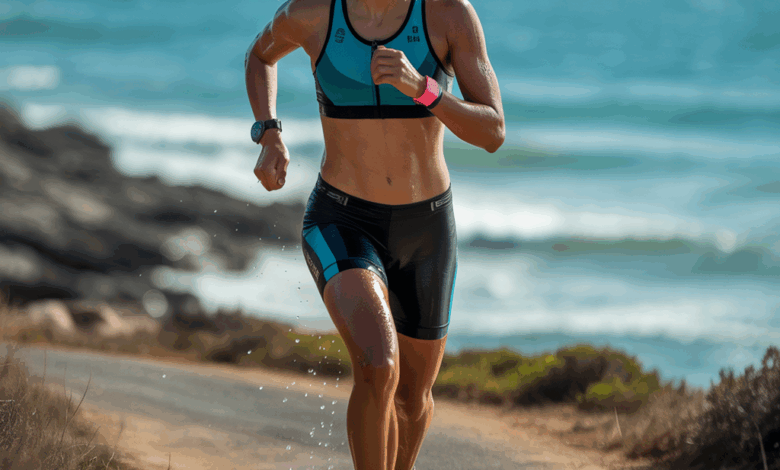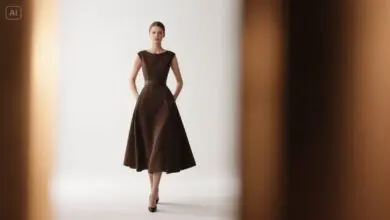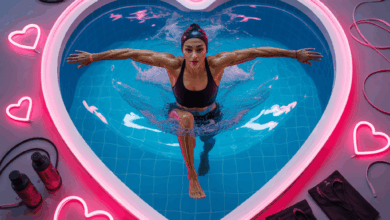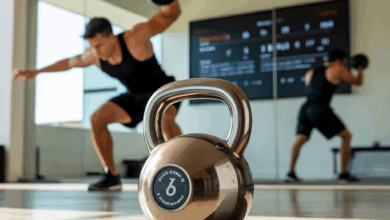Triathlon Shorts for Race Day: Choose the Right Pair for Speed, Comfort, and Confidence

Ever stood at the swim exit thinking, “Did I pick the right shorts for this race?” You’re not alone. Race morning jitters are real, and the last thing you want is to question your kit when every second counts. Choosing the perfect triathlon shorts for race day can improve comfort, speed up transitions, and reduce chafing—so you can focus on performance, not wardrobe malfunctions.
Why Your Choice of Triathlon Shorts Matters
Tri shorts are more than just apparel; they’re performance gear. On race day you’ll swim, bike, and run in the same outfit—often in varying temperatures and conditions. The right pair balances quick-drying fabric, an appropriately thin chamois, aerodynamic fit, and freedom of movement. A bad pair can cost you minutes through discomfort, friction, or slow transitions.
Performance benefits
- Faster transitions with two-piece or race-specific designs
- Reduced chafing from bonded seams and flatlock stitching
- Improved comfort from quick-dry, breathable fabrics
- Better aerodynamics with compressive fits
Common mistakes to avoid
- Using a cycling short with a thick chamois intended for long rides
- Choosing a size based on training shorts rather than a race-specific fit
- Not testing shorts in a brick workout or long session
Key Features to Look for in Race-Day Triathlon Shorts
Knowing what to look for makes shopping and testing faster. Here are the features that separate everyday shorts from true race-day tri shorts.
Fabric and quick-dry technology
Look for lightweight, breathable fabrics with high wicking capacity. Race-day materials should shed water quickly after the swim so you’re not sprinting from transition weighed down by holdover moisture.
Chamois—thin, fast, and race-specific
Triathlon chamois for races are thinner and less padded than traditional cycling pads. They provide enough comfort for the bike leg but won’t impede your run. Consider a contoured triathlon chamois designed to minimize friction and dry quickly.
Fit, compression, and leg grippers
A snug, compressive fit improves blood flow and reduces muscle vibration. Leg grippers should hold the shorts in place without digging into your skin. Test both standing and running to ensure no bunching or ride-up.
Pockets and practical design
Race shorts may include small pockets for gels or a rear stash. Decide if you’ll use a race belt or prefer integrated pockets. Also check for a fly or front zipper if bathroom access during long events matters to you.
Types of Triathlon Shorts: Which One Suits Your Race?
Understanding the main styles will help you pick the right kit for your distance and strategy.
One-piece trisuits vs two-piece kits
One-piece suits are aerodynamic and eliminate gaps between top and bottoms—great for Olympic and long-course racers. Two-piece tri kits offer faster transitions (you can drop the top between bike and run) and more versatility for training.
Compression vs race-fit shorts
Compression shorts support muscles and aid recovery but may feel tight in humid conditions. Race-fit or aero shorts prioritize speed; choose based on comfort and weather.
How to Pick and Test Triathlon Shorts for Race Day
Buying the shorts is step one—testing them is where you’ll avoid race-day surprises.
Sizing and trying on
- Follow manufacturer size charts, but try on before the race.
- Wear the underwear you plan to race in (or none, if you race commando) when testing fit.
- Move through swim-to-bike-to-run motions—squat, lunge, bike on a trainer, and jog.
Break them in during training
Reserve at least one brick workout and a long ride in your shorts before race day. That practice reveals chafing hotspots, ride-up issues, and how the chamois behaves when damp.
Workout Variations to Test Your Race Shorts
Use these practical workouts to evaluate fit, comfort, and performance under fatigue:
- Brick session: 30–60 min bike at race pace immediately followed by 20–30 min run
- Long ride with intervals: 90–120 min including 4 x 10-min race-pace efforts
- Open-water swim + short time-trial bike: assess how quickly shorts dry and feel on the bike
- Tempo run after cycling: practice nutrition and check for saddle-mark discomfort
Nutrition, Hydration, and Lifestyle Tips for Race Day Comfort
Clothing is only part of the equation. Your fueling and recovery routines affect how your body responds to gear.
- Pre-race hydration: drink regularly in the two days before your event to prevent swelling and chafing discomfort.
- Fueling on the bike: practice gel pockets and race-belt use so you don’t fumble in transition.
- Anti-chafe strategy: use a water-resistant lubricant on seams and inner thighs during humid conditions.
- Sleep and recovery: prioritize 7–9 hours before race day—fatigue can increase friction sensitivity.
Real-World Examples: What Worked for Other Triathletes
Case 1: Sarah, age-group rookie, chose a two-piece kit for her first Olympic triathlon. She practiced quick transitions and shaved 20 seconds off T2 by removing her top while on the run. Her lightweight race shorts dried quickly and prevented chafing.
Case 2: Marcus, a long-course racer, switched to a thin tri chamois and found his run splits improved. He prioritized compression fabrics that supported his quads during long climbs.
Frequently Asked Questions
1. Are cycling shorts OK for triathlons?
Cycling shorts with thick chamois are comfortable for long rides but can feel bulky and retain water after the swim. Triathlon-specific shorts with a thinner, fast-drying chamois are generally a better race-day option.
2. Should I wear underwear under tri shorts?
Most triathletes go without underwear (race commando) because modern tri chamois is designed to be worn directly against the skin and dries quickly. If you prefer underwear, choose seamless, quick-dry options designed for sports.
3. How many pairs of tri shorts should I own?
At minimum, one trusted race-day pair and one training pair. If you race often, rotate 2–3 race-quality pairs to extend fabric life and ensure you have a backup during taper week.
Conclusion — Make Race Day Yours with the Right Triathlon Shorts for Race Day
Choosing the right triathlon shorts for race day is a small decision with a big impact. Pick a pair with a race-specific chamois, quick-dry fabric, secure fit, and practical pockets, then test them in real workouts. When you combine the right shorts with smart training, nutrition, and transition practice, you’ll shave stress and seconds off your race. Ready to dial in your prep? Check out our workout routines and nutrition guides for race-week tips, and explore wellness tips to optimize recovery. Lace up, pin your number, and race confident.
Call to action: Try a short brick workout this week in your chosen racing shorts—note comfort, fit, and any chafe spots. If you want tailored advice, visit our workout routines page or dive into our nutrition guides and wellness tips for race-week strategies.





